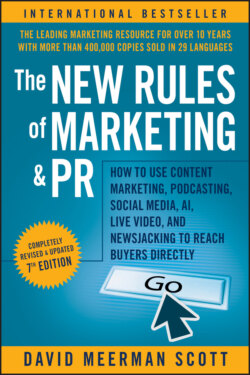Читать книгу The New Rules of Marketing and PR - David Meerman Scott, Kevin Nalty, Steve Garfield - Страница 33
Tell Me Something I Don’t Know, Please
ОглавлениеAmazon.com has been optimized for browsing. At a broad level, there are just two ways that people interact with web content: They search and they browse. Most organizations optimize sites for searching, which helps people answer their questions but doesn’t encourage them to browse. But people also want a site to tell them something they didn’t think to ask. The marketers at Amazon understand that when people browse the site, they may have a general idea of what they want (in my case, perhaps a book for my daughter about surfing) but not the particular title. So if I start with a search on Amazon for the phrase “surfing for beginners,” I get 99 titles in the search results. With this list as a starting point, I shift into browse mode, which is where Amazon excels. Each title has a customer ranking where I instantly see how other customers rated the book. I see reader-generated reviews, together with reviews from other media. I can see “Customers who bought this item also bought” lists and also rankings of “What other items do customers buy after viewing this item?” I can poke around the contents of the book itself. After I purchase the perfect book for my daughter (The Girl’s Guide to Surfing), I might get an email from Amazon weeks or months later, suggesting, based on this purchase, another book that I might find useful. This is brilliant stuff.
The site is designed to work for a major and often-ignored audience: people who do their own research and consider a decision over a period of time before making a commitment. Smart marketers, like the folks at Amazon and Cervélo, unlike those at the Big Three automakers we saw in Chapter 1, know that the most effective web strategies anticipate needs and provide content to meet them, even before people know to ask.
Marketing on the web is not about generic banner ads designed to trick people with neon color or wacky movement. It is about understanding the keywords and phrases that our buyers are using, and creating the content that they seek.
